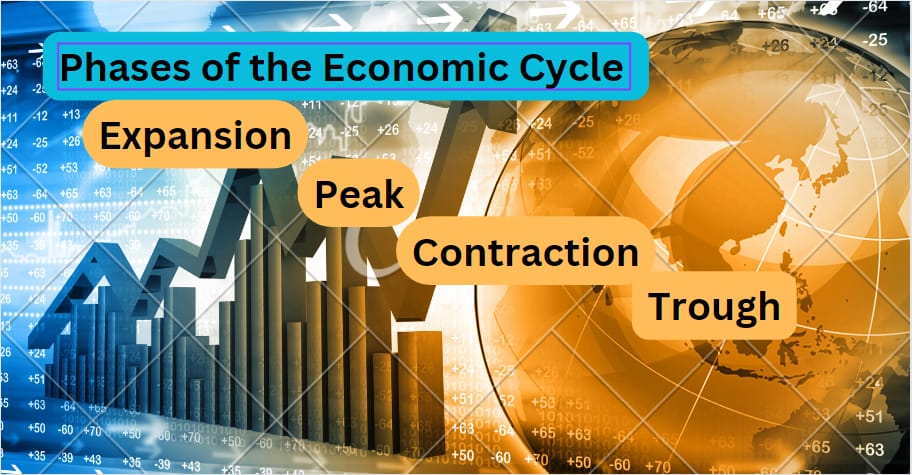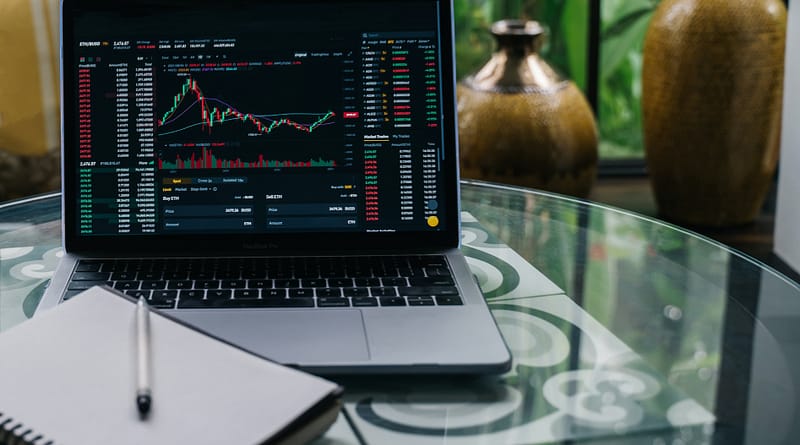Measuring and Managing the Four Stages of the Economic Cycle
The Economic Cycle
The economic cycle is a pattern of economic activity that exists in the majority of modern economies. It is characterized by periods of expansion and contraction, and it has a considerable impact on company performance and individual livelihoods. The Gross Domestic Product (GDP) is a fundamental indicator of the economic cycle since it indicates the entire value of goods and services produced by a country’s economy over a given time period. GDP is frequently employed as a measure of economic health, and it is actively monitored by firms, investors, and policymakers in order to understand where the economy is in the cycle and make informed decisions regarding investments and policy actions. Understanding the relationship between the economic cycle and GDP is critical to making sound business and investment decisions in a constantly changing economic environment.
Method of Measuring the Economic Cycle
Measuring the economic cycle is critical for firms, investors, and policymakers because it allows them to understand the current health of the economy and forecast future trends. Several metrics, including Gross Domestic Product (GDP), inflation, and unemployment rates, are routinely used to measure the economic cycle.
GDP is the most commonly used measure of economic activity, and it is defined as the total value of goods and services produced by a country’s economy over a given time period. It is seen as a dependable gauge of economic growth, with fluctuations in GDP signaling changes in the business cycle.
Another key economic indicator is inflation, which measures the pace at which prices for goods and services rise. When inflation is high, it can signify that the economy is nearing the end of its cycle and at risk of overheating.
Unemployment rates are also widely used to gauge the state of the economy. When unemployment is low, the economy is growing and firms are expanding, but high unemployment rates suggest that the economy is collapsing.
Consumer confidence, company investment, and interest rates are other indicators used to track the economic cycle. By monitoring these indicators, businesses, investors, and policymakers can gain insights into the state of the economy and make informed decisions about investments and policy actions.
Role of Govt to Managing the Economic Cycle
The government plays a critical role in managing the economic cycle and ensuring stable economic growth. One of the primary ways the government manages the economic cycle is through fiscal policy and monetary policy.
Fiscal policy refers to the government’s use of taxation and public spending to influence the economy. During times of economic contraction, the government can increase public spending to stimulate economic growth and reduce unemployment. Conversely, during times of economic expansion, the government can decrease public spending and increase taxes to prevent the economy from overheating.
Monetary policy refers to the actions taken by a central bank to influence the economy through changes in interest rates, reserve requirements, and other monetary tools. During times of economic contraction, central banks can lower interest rates to encourage borrowing and investment, which can stimulate economic growth. Conversely, during times of economic expansion, central banks can raise interest rates to prevent the economy from overheating and to combat inflation.
In addition to fiscal and monetary policy, the government also plays a role in regulating the economy through antitrust laws, consumer protection laws, and other regulations. These regulations can help ensure a level playing field for businesses and prevent the excesses that can contribute to economic instability.
Overall, the government’s role in managing the economic cycle is to promote stability and sustainable growth while minimizing the negative impacts of economic downturns. By employing fiscal and monetary policy and regulating the economy, the government can help ensure that the economic cycle remains within manageable bounds.
The Four Stages of the Economic Cycle

The economic cycle is divided into four stages to provide a simplified framework for understanding the behavior of the economy over time. The four stages – expansion, peak, contraction, and trough – help to identify the general direction of the economy and provide insight into what might be happening within specific sectors of the economy.
By breaking the economic cycle down into these four stages, it is easier to analyze and interpret economic data, such as GDP, employment rates, and inflation. It also allows policymakers and businesses to better anticipate changes in the economy, and to plan accordingly.
Of course, it is important to note that the economy is a complex system, and the four stages are not always precise or predictable. Some economic cycles may last longer or be more volatile than others, and some may skip certain stages altogether. However, despite these variations, the four-stage model provides a useful starting point for understanding the behavior of the economy over time.
The economic cycle is typically divided into four stages: expansion, peak, contraction, and trough. Each stage has its own unique characteristics that impact businesses, investors, and policymakers. Here’s a brief overview of each stage and its characteristics:
Expansion
The expansion stage is characterized by a growing economy, rising employment rates, and increasing consumer and business confidence. Businesses are expanding their operations, and consumers are spending more money, leading to increased economic output. The stock market typically experiences gains during this stage.
Peak
At the peak stage, the economy has reached its maximum point of growth, and expansion begins to slow down. Inflation typically increases, and interest rates rise to combat it. This stage is marked by high levels of economic activity, low unemployment rates, and high stock market prices. However, businesses and consumers may start to become overconfident and take on more risks.
Contraction
During the contraction stage, economic growth slows down, and businesses and consumers become more pessimistic. This stage is characterized by decreasing economic activity, rising unemployment rates, and falling stock market prices. Companies may begin to cut back on their operations, leading to lower economic output.
Trough
Finally, during the trough stage, the economy hits bottom and begins to recover. This stage is characterized by low economic activity, high unemployment rates, and low stock market prices. However, it is also a time when businesses and consumers may start to regain confidence, leading to the start of the next expansion stage.
Understanding the characteristics of each stage of the economic cycle is important for businesses, investors, and policymakers as it can help them make informed decisions about investments and policy actions that can help mitigate the negative impacts of economic downturns and take advantage of the opportunities presented by economic upswings.
What is the main Cause of Economic Cycle?
There is no single main cause of the economic cycle. The economic cycle is a natural and recurring process in a market economy, where economic activity and conditions are subject to fluctuations over time. A variety of factors contribute to the economic cycle, including changes in consumer and business sentiment, shifts in government policies, changes in interest rates and monetary policies, and external events such as natural disasters, global pandemics, or geopolitical events.
At a fundamental level, the economic cycle is driven by changes in the supply and demand for goods and services, which affect prices and employment levels. When demand for goods and services is high, prices and employment tend to rise, which can lead to inflationary pressures. Conversely, when demand is low, prices and employment tend to fall, which can lead to deflation and recessionary conditions.
Another factor that can contribute to the economic cycle is the availability of credit and the level of borrowing in the economy. When credit is readily available, businesses and consumers may borrow and spend more, which can stimulate economic growth. However, if borrowing becomes excessive, it can lead to a bubble and subsequent economic collapse.
In summary, the economic cycle is driven by a complex interplay of factors that influence supply and demand, prices, and borrowing levels. While there is no single cause of the economic cycle, understanding these factors can help individuals and businesses make more informed decisions about their investments and financial strategies.






